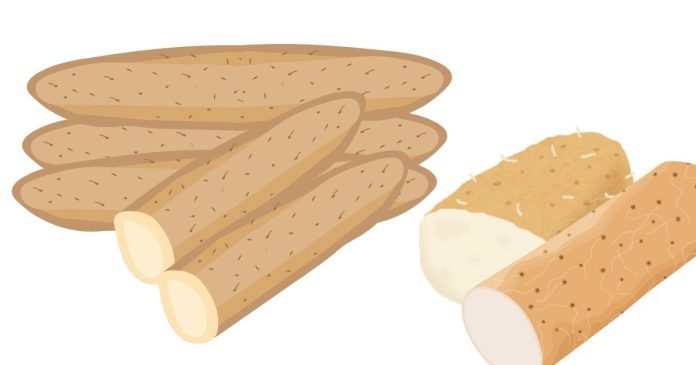Wild yam, scientifically known as Dioscorea species, is a type of tuber found in many parts of the world, including India. In Tamil, it is commonly known as “Sevankizhangu” (செவாங்கிழங்கு) or “Kootu Kizhangu” (கூட்டு கிழங்கு), depending on the regional variation.
Botanical Details:
- Genus: Dioscorea
- Common Name: Wild yam, Chinese yam, or air yam (depending on the species)
- Tamil Name: Sevankizhangu (செவாங்கிழங்கு)
Characteristics:
- Wild yam is a perennial plant that produces starchy tubers. These tubers can be elongated, cylindrical, or irregular in shape. They have a rough outer skin, usually brown or purple in color, and a white or pale yellowish interior.
- Wild yam grows on a vine and is typically found in forested or hilly regions.
- In Tamil Nadu and other parts of India, wild yam is commonly cultivated for its edible tubers.
Uses of Wild Yam in Tamil Nadu:
- Culinary Use:
- The tuber of wild yam is edible and is used in various forms, often boiled or roasted. It is used in traditional Tamil dishes, particularly in curries or stir-fries. It can also be used in kootu, a vegetable-based dish cooked with lentils and spices.
- It is also consumed as a root vegetable in various regional preparations like sundal (a kind of stir-fry with legumes or tubers), soups, or even fried as a snack.
- Traditional Medicine:
- Wild yam has been used in traditional medicine, especially in Ayurveda and Siddha, for its various health benefits. The tubers are believed to help with digestive issues, improve energy levels, and balance hormonal levels. It has been associated with remedies for conditions like arthritis and inflammation.
- It is sometimes used in the form of a powder or extract, often for its reputed anti-inflammatory and anti-spasmodic properties.
- Nutritional Value:
- Wild yam is rich in carbohydrates and provides a good source of energy. It also contains a variety of nutrients, including vitamins (like Vitamin C and B-vitamins), minerals (such as potassium and magnesium), and fiber.
- Cultural Significance:
- Wild yam is not just a food source; it also plays a role in the cultural practices of rural communities in Tamil Nadu. For example, it is used in certain traditional festivals and offerings in temples.
Medicinal Uses (In Traditional Practices):
- Wild yam is also known for its purported ability to aid in women’s health, particularly related to menstrual irregularities and menopause symptoms. This is because the plant contains compounds like diosgenin, which is a precursor to the production of steroid hormones.
- It’s believed to help balance estrogen levels, though modern research on these claims is still ongoing.
Other Common Names:
- English: Wild Yam, Chinese Yam, Air Yam
- Sanskrit: “Shatavari” or “Bala” (in some contexts related to the medicinal variety)


